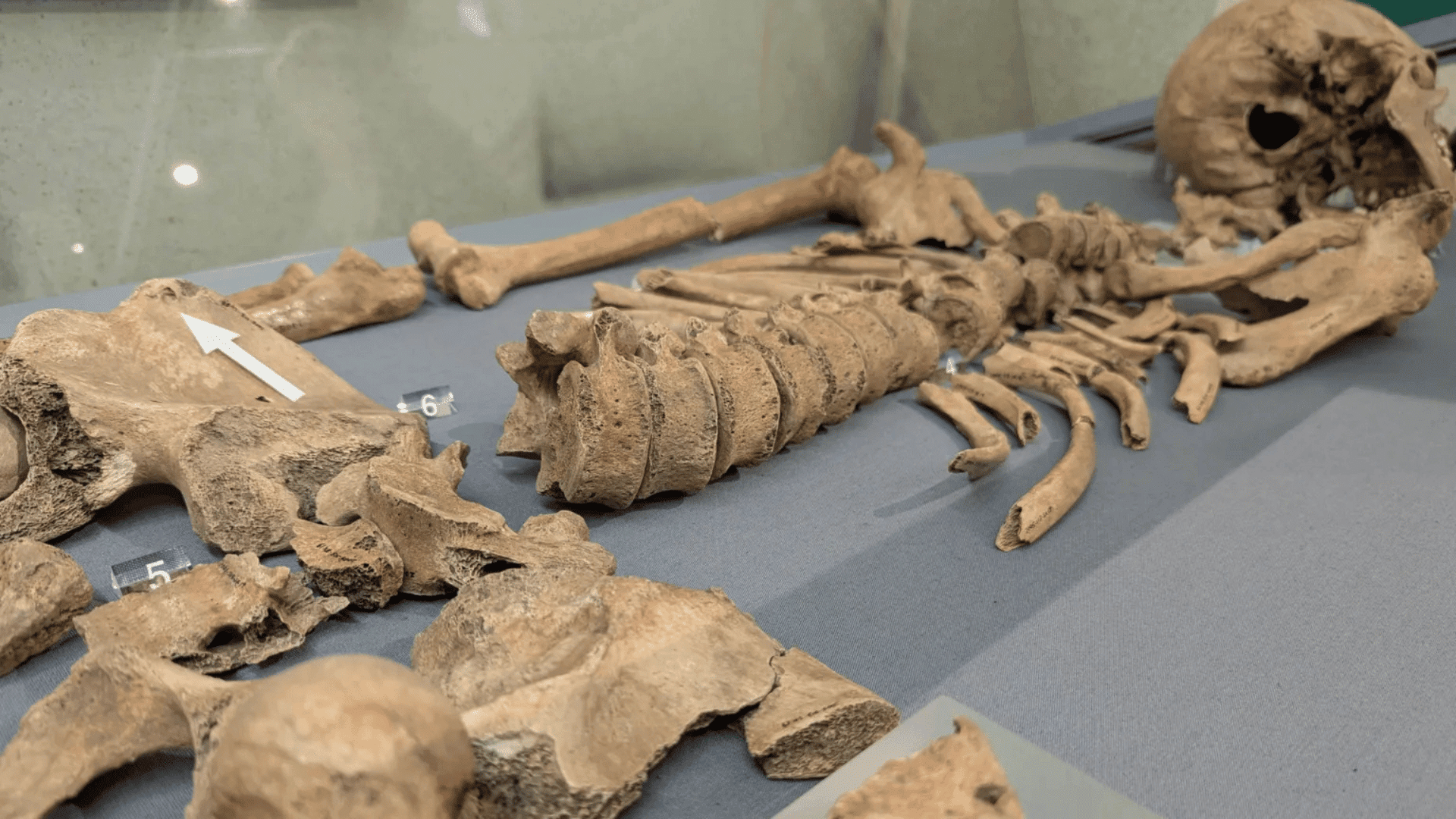Researchers discovered bite marks on the pelvis of a Roman-era skeleton, marking the first physical evidence of a gladiator fighting with a lion.
3D Scans Reveal Gladiator vs. Lion Combat

Roman texts and art describe gladiator events that included bears, elephants, wild cats, and other animals. However, despite the fact that hundreds of Roman amphitheatres have been excavated, none of the approximately 200 presumed gladiator skeletons have displayed clear signs of an animal attack.
According to Tim Thompson at Maynooth University in Ireland, the new findings are the first physical evidence of humans battling animals in gladiator arenas in Europe.
Scientists originally found the remains of approximately one hundred Roman-era people near York, UK, during an urban development project in 2004 and 2005. The human remains were from the 1st to 4th century AD and primarily young men with various injuries, including decapitation.
One skeleton in particular appeared to have depressions and puncture marks across the hips, which researchers speculated could have been caused by an animal attack. Thompson and his colleagues tested this theory by running 3D scans on the pelvis and comparing them to scans of fresh bite patterns on the bones of horse carcasses that had been fed to large cats such as leopards, lions, tigers, and cheetahs at zoos.
The results showed that the 10 bite marks on the presumed gladiator’s bones closely resembled those made by zoo lions on the horse’s bones. Both the position and the depth of the teeth marks were notably similar.
The bite was likely not fatal, according to researchers, who also noted that the placement of the bites is interesting, as lions typically aim for the throat when attacking.
“What probably happened here is that the individual got knocked down by some other means, and then the lion dragged him away,” said Thompson.
David Jennings, CEO of York Archaeology, told BBC: “We may never know what brought this man to the arena where we believe he may have been fighting for the entertainment of others, but it is remarkable that the first osteoarchaeological evidence for this kind of gladiatorial combat has been found so far from the Colosseum of Rome, which would have been the classical world’s Wembley Stadium of combat.”







